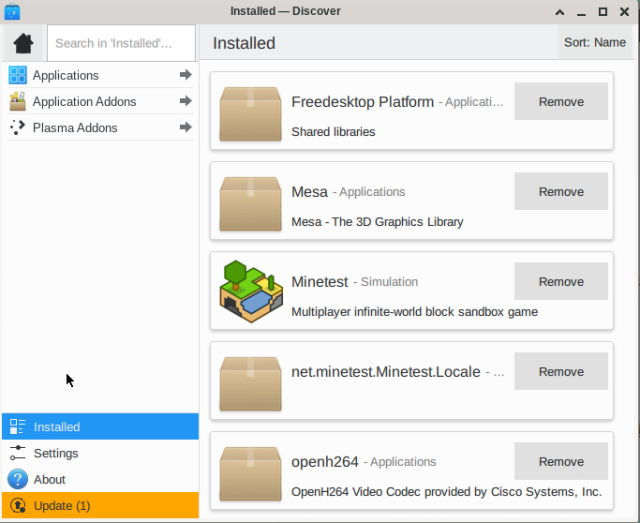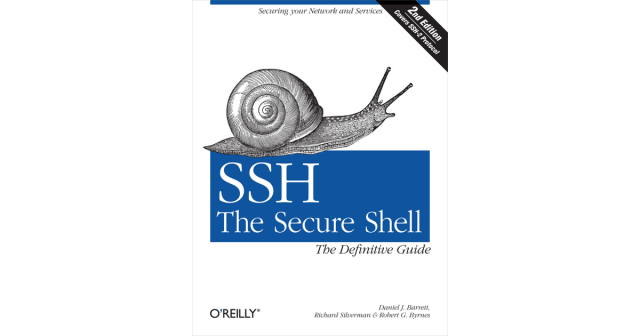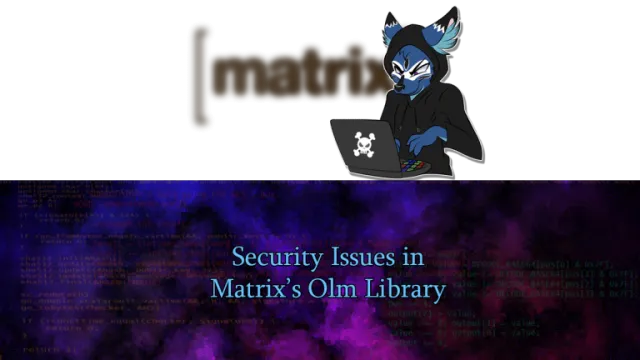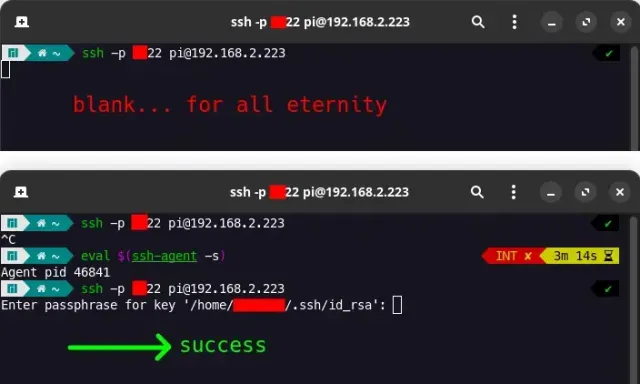Två norrmän gripna för narkotikasmuggling. I tisdags greps två norska medborgarna i Colombia. De greps i en internationell polisinsats som har letts av den spanska polisen. Insatsen som går under beteckningen Mentor har pågått sedan juni 2020 och 11 länder har deltagit.
"What has devastated Mt. Gorongosa’s forest canopy is aggressive deforestation."People are poor and telling them not to cut forest wood makes no sense. There was no motivation for them to guard the forest.
"So our innovation to plant and embed coffee trees amongst the fast-growing indigenous trees quickly won over local communities."
#mozambique #gorongosa #reforestation #rewilding #coffee #forests #africa
rewildingmag.com/the-forest-is…
“The forest is us, and we are it too”
How native forest in Mozambique's Gorongosa National Park is getting a helping hand from an unlikely partner: coffee farming.Winile Ximba (Rewilding Magazine)
– Vi levererar nu ett pärlband av beslut för att bana väg för ny kärnkraft.
Näringsminister Ebba Busch
Ett av dessa ”pärlor” för nya kärnkraftverk kan bli en enorm statlig satsning enligt förslag i en utredning som presenterades i måndags.
Enligt förslaget i utredningen ska staten låna upp minst 300 miljarder kronor för fyra […]
nyhetskartan.se/2024/08/14/kar…
Kärnkraft till varje pris? PEPPRAT RÖDGRÖNT - Nyhetskartan.se
– Vi levererar nu ett pärlband av beslut för att bana väg för ny kärnkraft. Näringsminister Ebba Busch Ett av dessa ”pärlor” för nya kärnkraftverk kan bli en enorm statlig satsning enligt förslag i en utredning som presenterades i måndags.Nyhetskartan.se
Flatpak on Slackware

Flatpak on Slackware
A while ago, someone e-mailed me with a request to add Flatpak to my repository. At the time, I had no interest in Flatpak, had not actually bothered to investigate it, so I said “sorry, no…Alien Pastures
reshared this
Linux reshared this.
Jesper Nilsson har skrivit en intressant reflektion över vänstermedier som kan se som en slags reaktion eller kommentar till mitt blogginlägg om vänstermedias kräftgång. De centrala budskapen i hans artikel är att vänstermedia misslyckas på grund av omvärlden (mer specifikt på grund av den svaga vänstern) och att statistik inte är att lita på. Utan […]
blog.zaramis.se/2024/08/14/uta…
Utan vänsterpolitik misslyckas vänstermedier - Svenssons Nyheter
Jesper Nilsson har skrivit en intressant reflektion över vänstermedier. Utan vänsterpolitik misslyckas vänstermedier.Anders_S (Svenssons Nyheter)
I don’t consider myself exceptional in any regard, but I stumbled upon a few cryptography vulnerabilities in Matrix’s Olm library with so little effort that it was nearly accidental.
It should not be this easy to find these kind of issues in any product people purportedly rely on for private messaging, which many people evangelize incorrectly as a Signal alternative.
Later, I thought I identified an additional vulnerability that would have been much worse, but I was wrong about that one. For the sake of transparency and humility, I’ll also describe that in detail.
This post is organized as follows:
- Disclosure Timeline
- Vulnerabilities in Olm (Technical Details)
- Recommendations
- Background Information
- An Interesting Non-Issue That Looked Critical
I’ve opted to front-load the timeline and vulnerability details to respect the time of busy security professionals.
Please keep in mind that this website is a furry blog, first and foremost, that sometimes happens to cover security and cryptography topics.Many people have, over the years, assumed the opposite and commented accordingly. The ensuing message board threads are usually is a waste of time and energy for everyone involved. So please adjust your expectations.
Art by Harubaki
If you’re curious, you can learn more here.
Disclosure Timeline
- 2024-05-15: I took a quick look at the Matrix source code. I identified two issues and emailed them to their
security@email address.
In my email, I specify that I plan to disclose my findings publicly in 90 days (i.e. on August 14), in adherence with industry best practices for coordinated disclosure, unless they request an extension in writing. - 2024-05-16: I checked something else on a whim and find a third issue, which I also email to their
security@email address. - 2024-05-17: Matrix security team confirms receipt of my reports.
- 2024-05-17: I follow up with a suspected fourth finding–the most critical of them all. They point out that it is not actually an issue, because I overlooked an important detail in how the code is architected. Mea culpa!
- 2024-05-18: A friend discloses a separate finding with Matrix’s protocol. (Will update this to link to their write-up once it’s public.)
They instructed the Matrix developers to consult with me if they needed cryptography guidance. I never heard from them on this externally reported issue. - 2024-07-12: I shared this blog post draft with the Matrix security team while reminding them of the public disclosure date.
- 2024-07-31: Matrix pushes a commit that announces that libolm is deprecated.
- 2024-07-31: I email the Matrix security team asking if they plan to fix the reported issues (and if not, if there’s any other reason I should withhold publication).
- 2024-07-31: Matrix confirms they will not fix these issues (due to its now deprecated status), but ask that I withhold publication until the 14th as originally discussed.
- 2024-08-14: This blog post is publicly disclosed to the Internet.
Vulnerabilities in Olm
I identified the following issues with Olm through a quick skim of their source code on Gitlab:
- AES implementation is vulnerable to cache-timing attacks
- Ed25519 signatures are malleable
- Timing leakage in base64 decoding of private key material
This is sorted by the order in which they were discovered, rather than severity.
AES implementation is vulnerable to cache-timing attacks
Olm ships a pure-software implementation of AES, rather than leveraging hardware acceleration.
// Substitutes a word using the AES S-Box.WORD SubWord(WORD word){unsigned int result;result = (int)aes_sbox[(word >> 4) & 0x0000000F][word & 0x0000000F];result += (int)aes_sbox[(word >> 12) & 0x0000000F][(word >> 8) & 0x0000000F] << 8;result += (int)aes_sbox[(word >> 20) & 0x0000000F][(word >> 16) & 0x0000000F] << 16;result += (int)aes_sbox[(word >> 28) & 0x0000000F][(word >> 24) & 0x0000000F] << 24;return(result);}
The code in question is called from this code, which is in turn used to actually encrypt messages.
Software implementations of AES that use a look-up table for the SubWord step of the algorithm are famously susceptible to cache-timing attacks.
This kind of vulnerability in software AES was previously used to extract a secret key from OpenSSL and dm-crypt in about 65 milliseconds. Both papers were published in 2005.
A general rule in cryptography is, “attacks only get better; they never get worse“.
As of 2009, you could remotely detect a timing difference of about 15 nanosecond over the Internet with under 50,000 samples. Side-channel exploits are generally statistical in nature, so such a sample size is generally not a significant mitigation.
How is this code actually vulnerable?
In the above code snippet, the vulnerability occurs inaes_sbox[/* ... */][/* ... */].
Due to the details of how the AES block cipher works, the input variable (word) is a sensitive value.
Software written this way allows attackers to detect whether or not a specific value was present in one of the processor’s caches.
To state the obvious: Cache hits are faster than cache misses. This creates an observable timing difference.
Such a timing leak allows the attacker to learn the value that was actually stored in said cache. You can directly learn this from other processes on the same hardware, but it’s also observable over the Internet (with some jitter) through the normal operation of vulnerable software.
See also: cryptocoding’s description for table look-ups indexed by secret data.
How to mitigate this cryptographic side-channel
The correct way to solve this problem is to use hardware accelerated AES, which uses distinct processor features to implement the AES round function and side-steps any cache-timing shenanigans with the S-box.
Not only is this more secure, but it’s faster and uses less energy too!
If you’re also targeting devices that don’t have hardware acceleration available, you should first use hardware acceleration where possible, but then fallback to a bitsliced implementation such as the one in Thomas Pornin’s BearSSL.
See also: the BearSSL documentation for constant-time AES.

Ed25519 signatures are malleable
Ed25519 libraries come in various levels of quality regarding signature validation criteria; much to the chagrin of cryptography engineers everywhere. One of those validation criteria involves signature malleability.
Signature malleability usually isn’t a big deal for most protocols, until suddenly you discover a use case where it is. If it matters, that usually that means you’re doing something with cryptocurrency.
Briefly, if your signatures are malleable, that means you can take an existing valid signature for a given message and public key, and generate a second valid signature for the same message. The utility of this flexibility is limited, and the impact depends a lot on how you’re using signatures and what properties you hope to get out of them.
For ECDSA, this means that for a given signature 


Matrix uses Ed25519, whose malleability is demonstrated between 

This is trivially possible because S is implicitly reduced modulo the order of the curve, 
0x1000000000000000000000000000000014def9dea2f79cd65812631a5cf5d3ed) and S is encoded as a 256-bit number.
The Ed25519 library used within Olm does not ensure that 
int ed25519_verify(const unsigned char *signature, const unsigned char *message, size_t message_len, const unsigned char *public_key) { unsigned char h[64]; unsigned char checker[32]; sha512_context hash; ge_p3 A; ge_p2 R; if (signature[63] & 224) { return 0; } if (ge_frombytes_negate_vartime(&A, public_key) != 0) { return 0; } sha512_init(&hash); sha512_update(&hash, signature, 32); sha512_update(&hash, public_key, 32); sha512_update(&hash, message, message_len); sha512_final(&hash, h); sc_reduce(h); ge_double_scalarmult_vartime(&R, h, &A, signature + 32); ge_tobytes(checker, &R); if (!consttime_equal(checker, signature)) { return 0; } return 1;}
This is almost certainly a no-impact finding (or low-impact at worst), but still an annoying one to see in 2024.
If you’d like to learn more, this page is a fun demo of Ed25519 malleability.
To mitigate this, I recommend implementing these checks from libsodium.

Timing leakage in base64 decoding of private key material
If you weren’t already tired of cache-timing attacks based on table look-ups from AES, the Matrix base64 code is also susceptible to the same implementation flaw.
while (pos != end) { unsigned value = DECODE_BASE64[pos[0] & 0x7F]; value <<= 6; value |= DECODE_BASE64[pos[1] & 0x7F]; value <<= 6; value |= DECODE_BASE64[pos[2] & 0x7F]; value <<= 6; value |= DECODE_BASE64[pos[3] & 0x7F]; pos += 4; output[2] = value; value >>= 8; output[1] = value; value >>= 8; output[0] = value; output += 3;}
The base64 decoding function in question is used to load the group session key, which means the attack published in this paper almost certainly applies.
How would you mitigate this leakage?
Steve Thomas (one of the judges of the Password Hashing Competition, among other noteworthy contributions) wrote some open source code a while back that implements base64 encoding routines in constant-time.
The real interesting part is how it avoids a table look-up by using arithmetic (from this file):
// Base64 character set:// [A-Z] [a-z] [0-9] + /// 0x41-0x5a, 0x61-0x7a, 0x30-0x39, 0x2b, 0x2finline int base64Decode6Bits(char src){int ch = (unsigned char) src;int ret = -1;// if (ch > 0x40 && ch < 0x5b) ret += ch - 0x41 + 1; // -64ret += (((0x40 - ch) & (ch - 0x5b)) >> 8) & (ch - 64);// if (ch > 0x60 && ch < 0x7b) ret += ch - 0x61 + 26 + 1; // -70ret += (((0x60 - ch) & (ch - 0x7b)) >> 8) & (ch - 70);// if (ch > 0x2f && ch < 0x3a) ret += ch - 0x30 + 52 + 1; // 5ret += (((0x2f - ch) & (ch - 0x3a)) >> 8) & (ch + 5);// if (ch == 0x2b) ret += 62 + 1;ret += (((0x2a - ch) & (ch - 0x2c)) >> 8) & 63;// if (ch == 0x2f) ret += 63 + 1;ret += (((0x2e - ch) & (ch - 0x30)) >> 8) & 64;return ret;}
Any C library that handles base64 codecs for private key material should use a similar implementation. It’s fine to have a faster base64 implementation for non-secret data.
Worth noting: Libsodium also provides a reasonable Base64 codec.
Recommendations
These issues are not fixed in libolm.
Instead of fixing libolm, the Matrix team recommends all Matrix clients adopt vodozemac.
I can’t speak to the security of vodozemac.

But I can speak against the security of libolm, so moving to vodozemac is probably a good idea. It was audited by Least Authority at one point, so it’s probably fine.
Most Matrix clients that still depended on libolm should treat this blog as public 0day, unless the Matrix security team already notified you about these issues.
Background Information
If you’re curious about the backstory and context of these findings, read on.Otherwise, feel free to skip this section. It’s not pertinent to most audiences. The people that need to read it already know who they are.
End-to-end encryption is one of the topics within cryptography that I find myself often writing about.
In 2020, I wrote a blog post covering end-to-end encryption for application developers. This was published several months after another blog I wrote covering gripes with AES-GCM, which included a shallow analysis of how Signal uses the algorithm for local storage.
In 2021, I published weaknesses in another so-called private messaging app called Threema.
In 2022, after Elon Musk took over Twitter, I joined the Fediverse and sought to build end-to-end encryption support for direct messages into ActivityPub, starting with a specification. Work on this effort was stalled while trying to solve Public Key distribution in a federated environment (which I hope to pick up soon, but I digress).
Earlier this year, the Telegram CEO started fearmongering about Signal with assistance from Elon Musk, so I wrote a blog post urging the furry fandom to move away from Telegram and start using Signal more. As I had demonstrated years prior, I was familiar with Signal’s code and felt it was a good recommendation for security purposes (even if its user experience needs significant work).
I thought that would be a nice, self-contained blog post. Some might listen, most would ignore it, but I could move on with my life.
I was mistaken about that last point.

An overwhelming number of people took it upon themselves to recommend or inquire about Matrix, which prompted me to hastily scribble down my opinion on Matrix so that I might copy/paste a link around and save myself a lot of headache.
Just when I thought the firehose was manageable and I could move onto other topics, one of the Matrix developers responded to my opinion post.
Thus, I decided to briefly look at their source code and see if any major or obvious cryptography issues would fall out of a shallow visual scan.
Since you’re reading this post, you already know how that ended.

Since the first draft of this blog post was penned, I also outlined what I mean when I say an encrypted messaging app is a Signal competitor or not, and published my opinion on XMPP+OMEMO (which people also recommend for private messaging).
Why mention all this?
Because it’s important to know that I have not audited the Olm or Megolm codebases, nor even glanced at their new Rust codebase.
The fact is, I never intended to study Matrix. I was annoyed into looking at it in the first place.
My opinion of their project was already calcified by the previously discovered practically-exploitable cryptographic vulnerabilities in Matrix in 2022.
The bugs described above are the sort of thing I mentally scan for when I first look at a project just to get a feel for the maturity of the codebase. I do this with the expectation (hope, really) of not finding anything at all.
(If you want two specific projects that I’ve subjected to a similar treatment, and failed to discover anything interesting in: Signal and WireGuard. These two set the bar for cryptographic designs.)
It’s absolutely bonkers that an AES cache timing vulnerability was present in their code in 2024.
It’s even worse when you remember that I was inundated with Matrix evangelism in response to recommending furries use Signal.I’m a little outraged because of how irresponsible this is, in context.
It’s so bad that I didn’t even need to clone their git repository, let alone run basic static analysis tools locally.
So if you take nothing else away from this blog post, let it be this:
There is roughly a 0% chance that I got extremely lucky in my mental grep and found the only cryptography implementation flaws in their source code. I barely tried at all and found these issues.
I would bet money on there being more bugs or design flaws that I didn’t find, because this discovery was the result of an extremely half-assed effort to blow off steam.
Wasn’t libolm deprecated in May 2022?
The Matrix developers like to insist that their new Rust hotness “vodozemac” is what people should be using today.
I haven’t looked at vodozemac at all, but let’s pretend, for the sake of argument, that its cryptography is actually secure.
(This is very likely if they turn out to be using RustCrypto for their primitives, but I don’t have the time or energy for that nerd snipe, so I’m not going to look. Least Authority did audit their Rust library, for what it’s worth, and Least Authority isn’t clownshoes.)
It’s been more than 2 years since they released vodozemac. What does the ecosystem penetration for this new library look like, in practice?
A quick survey of the various Matrix clients on GitHub says that libolm is still the most widely used cryptography implementation in the Matrix ecosystem (as of this writing):
| Matrix Client | Cryptography Backend |
|---|---|
| github.com/tulir/gomuks | libolm (1, 2) |
| github.com/niochat/nio | libolm (1, 2) |
| github.com/ulyssa/iamb | vodozemac (1, 2) |
| github.com/mirukana/mirage | libolm (1) |
| github.com/Pony-House/Client | libolm (1) |
| github.com/MTRNord/cetirizine | libolm (1) |
| github.com/nadams/go-matrixcli | none |
| github.com/mustang-im/mustang | libolm (1) |
| github.com/marekvospel/libretr… | libolm (1) |
| github.com/yusdacra/icy_matrix | none |
| github.com/ierho/element | libolm (through the python SDK) |
| github.com/mtorials/cordless | none |
| github.com/hwipl/nuqql-matrixd | libolm (through the python SDK) |
| github.com/maxkratz/element-we… | vodozemac (1, 2, 3, 4) |
| github.com/asozialesnetzwerk/r… | libolm (wasm file) |
| github.com/NotAlexNoyle/Versi | libolm (1, 2) |
2 of the 16 clients surveyed use the new vodozemac library. 11 still use libolm, and 3 don’t appear to implement end-to-end encryption at all.
If we only focus on clients that support E2EE, vodozemac has successfully been adopted by 15% of the open source Matrix clients on GitHub.
I deliberately excluded any repositories that were archived or clearly marked as “old” or “legacy” software, because including those would artificially inflate the representation of libolm. It would make for a more compelling narrative to do so, but I’m not trying to be persuasive here.
Deprecation policies are a beautiful lie. The impact of a vulnerability in Olm or Megolm is still far-reaching, and should be taken seriously by the Matrix community.
Worth calling out: this quick survey, which is based on a GitHub Topic, certainly misses other implementations. Both FluffyChat and Cinny, which were not tagged with this GitHub Topic, depend a language-specific Olm binding.These bindings in turn wrap libolm rather than the Rust replacement, vodozemac.
But the official clients…
I thought the whole point of choosing Matrix over something like Signal is to be federated, and run your own third-party clients?
If we’re going to insist that everyone should be using Element if they want to be secure, that defeats the entire marketing point about third-party clients that Matrix evangelists cite when they decry Signal’s centralization.
So I really don’t want to hear it.
An Interesting Non-Issue That Looked Critical
As I mentioned in the timeline at the top, I thought I found a fourth issue with Matrix’s codebase. Had I been correct, this would have been a critical severity finding that the entire Matrix ecosystem would need to melt down to remediate.
Fortunately for everyone, I made a mistake, and there is no fourth vulnerability after all.
However, I thought it would be interesting to write about what I thought I found, the impact it would have had if it were real, and why I believed it to be an issue.
Let’s start with the code in question:
void ed25519_sign(unsigned char *signature, const unsigned char *message, size_t message_len, const unsigned char *public_key, const unsigned char *private_key) { sha512_context hash; unsigned char hram[64]; unsigned char r[64]; ge_p3 R; sha512_init(&hash); sha512_update(&hash, private_key + 32, 32); sha512_update(&hash, message, message_len); sha512_final(&hash, r); sc_reduce(r); ge_scalarmult_base(&R, r); ge_p3_tobytes(signature, &R); sha512_init(&hash); sha512_update(&hash, signature, 32); sha512_update(&hash, public_key, 32); sha512_update(&hash, message, message_len); sha512_final(&hash, hram); sc_reduce(hram); sc_muladd(signature + 32, hram, private_key, r);}
The highlighted segment is doing pointer arithmetic. This means it’s reading 32 bytes, starting from the 32nd byte in private_key.
What’s actually happening here is: private_key is the SHA512 hash of a 256-bit seed. If you look at the function prototype, you’ll notice that public_key is a separate input.
Virtually every other Ed25519 implementation I’ve ever looked at before expected users to provide a 32 byte seed followed by the public key as a single input.
This led me to believe that this private_key + 32 pointer arithmetic was actually using the public key for calculating r.
The variable r (not to be confused with big R) generated via the first SHA512 is the nonce for a given signature, it must remain secret for Ed25519 to remain secure.
If r is known to an attacker, you can do some arithmetic to recover the secret key from a single signature.
Because I had mistakenly believed that r was calculated from the SHA512 of only public inputs (the public key and message), which I must emphasize isn’t correct, I had falsely concluded that any previously intercepted signature could be used to steal user’s private keys.

But because private_key was actually the full SHA512 hash of the seed, rather than the seed concatenated with the public key, this pointer arithmetic did NOT use the public key for the calculation of r, so this vulnerability does not exist.
If the code did what I thought it did, however, this would have been a complete fucking disaster for the Matrix ecosystem. Any previously intercepted message would have allowed an attacker to recover a user’s secret key and impersonate them. It wouldn’t be enough to fix the code; every key in the ecosystem would need to be revoked and rotated.
Whew!
I’m happy to be wrong about this one, because that outcome is a headache nobody wants.
So no action is needed, right?
Well, maybe.
Matrix’s library was not vulnerable, but I honestly wouldn’t put it past software developers at large to somehow, somewhere, use the public key (rather than a secret value) to calculate the EdDSA signature nonces as described in the previous section.
To that end, I would like to propose a test vector be added to the Wycheproof test suite to catch any EdDSA implementation that misuses the public key in this way.
Then, if someone else screws up their Ed25519 implementation in the exact way I thought Matrix was, the Wycheproof tests will catch it.
For example, here’s a vulnerable test input for Ed25519:
{ "should-fail": true, "secret-key": "d1d0ef849f9ec88b4713878442aeebca5c7a43e18883265f7f864a8eaaa56c1ef3dbb3b71132206b81f0f3782c8df417524463d2daa8a7c458775c9af725b3fd", "public-key": "f3dbb3b71132206b81f0f3782c8df417524463d2daa8a7c458775c9af725b3fd", "message": "Test message", "signature": "ffc39da0ce356efb49eb0c08ed0d48a1cadddf17e34f921a8d2732a33b980f4ae32d6f5937a5ed25e03a998e4c4f5910c931b31416e143965e6ce85b0ea93c09"}
A similar test vector would also be worth creating for Ed448, but the only real users of Ed448 were the authors of the xz backdoor, so I didn’t bother with that.
(None of the Project Wycheproof maintainers knew this suggestion is coming, by the way, because I was respecting the terms of the coordinated disclosure.)
Closing Thoughts
Despite finding cryptography implementation flaws in Matric’s Olm library, my personal opinion on Matrix remains largely unchanged from 2022. I had already assumed it would not meet my bar for security.
Cryptography engineering is difficult because the vulnerabilities you’re usually dealing with are extremely subtle. (Here’s an unrelated example if you’re not convinced of this general observation.) As SwiftOnSecurity once wrote:
twitter.com/SwiftOnSecurity/st…
The people that developed Olm and Megolm has not proven themselves ready to build a Signal competitor. In balance, most teams are not qualified to do so.
I really wish the Matrix evangelists would accept this and stop trying to cram Matrix down other people’s throats when they’re talking about problems with other platforms entirely.
More important for the communities of messaging apps:You don’t need to be a Signal competitor. Having E2EE is a good thing on its own merits, and really should be table stakes for any social application in 2024.
It’s only when people try to advertise their apps as a Signal alternative (or try to recommend it instead of Signal), and offer less security, that I take offense.
Just be your own thing.
My work-in-progress proposal to bring end-to-end encryption to the Fediverse doesn’t aim to compete with Signal. It’s just meant to improve privacy, which is a good thing to do on its own merits.
If I never hear Matrix evangelism again after today, it would be far too soon.
If anyone feels like I’m picking on Matrix, don’t worry: I have far worse things to say about Telegram, Threema, XMPP+OMEMO, Tox, and a myriad other projects that are hungry for Signal’s market share but don’t measure up from a cryptographic security perspective.
If Signal fucked up as bad as these projects, my criticism of Signal would be equally harsh. (And remember, I have looked at Signal before.)
soatok.blog/2024/08/14/securit…
#crypto #cryptography #endToEndEncryption #Matrix #sideChannels #vuln
The Most Backdoor-Looking Bug I’ve Ever Seen
This is the story of a bug that was discovered and fixed in Telegram's self-rolled cryptographic protocol about seven years ago.Filippo Valsorda
The people afraid to show their peers or bosses my technical writing because it also contains furry art are some of the dumbest cowards in technology.Considering the recent events at ApeFest, a competitive level of stupidity is quite impressive.
To be clear, the exhibited stupidity in question is their tendency to project their own sexual connotations onto furry art–even if said art isn’t sexual in nature in any meaningful sense of the word.
But then again, poetry can be sexual, so who knows?
Scandalous furry,
Why are you glitching like that?
Haiku are lewd too!
Art: AJThe cowardice comes in with the fear of their peers or bosses judging them for *checks notes* the content and presentation that I wrote, and not them.
Which (if you think about it for any significant length of time) implies that they’re generally eager to take credit for other people’s work, but their selfishness was thwarted by a cute cartoon dhole doing something totally innocent.
Even sillier, there’s a small contingent on technical forums that are “concerned” about the growing prevalence of queer and furry identities in technical spaces (archived).
Even some old school hackers conveniently forget that
alt.fan.furrywas a thing before the Internet.As frustratingly incompetent as these hot takes are, they pale in comparison to, by far, the biggest source of bad opinions about the furry fandom.
Credit: Tirrelous
The call is coming from inside the house.
Like Cats and Dogs
Last month, I wrote a blog post about Aural Alliance, which caused a menace in the furry music space to accuse me of “bad journalism” for not verbally crucifying the label’s creator (a good friend of mine) for having a failed business venture in the past, or taking credit for donating to their cause early on.
Twitter DM conversation.
Everyone I’ve talked to that has dealt with this particular person before responded with, “Yeah, this is typical Cassidy behavior.”To which one must wonder, “Since when am I a journalist?”
I’ve never called myself a journalist. I’m a blogger and I don’t pretend to be anything more than that. I especially would never besmirch the work of real journalists by comparing it with my musings.
At times, I also wear the security researcher hat, but you’ll only hear about it when I’m publishing a vulnerability.
This is a personal blog. I will neither be censored nor subject to compelled speech. I have no moral or professional obligations to “both sides” of what amounts to a nontroversy.
Nobody has ever paid me to write anything here, and I will never accept any compensation for my writing.
Sure, I contributed to covering Aural Alliance’s up-front infrastructure costs when it was just an idea in Finn’s head. I’m not going to apologize for supporting artists. The Furry Fandom wouldn’t exist without artists.
This kind of behavior isn’t an isolated incident, unfortunately. A handful of furries have rage-quit tech groups I’m in because they found out I generously tipped artists that were under-charging for their work.
It bewilders me every time someone reacts this way. Do you not know the community you’re in?
The most intelligible pushback I’ve seen over the years is, “Well if everyone raises their prices, low-income furries will be pushed out of the market!”
Setting aside that art is a luxury, not a need for a moment, that’s not actually true.
There are so many artists, and they’re so decentralized, that no coherent price coordination effort is even possible. It’s worse than herding cats. Some may raise their prices by $5, others by $500. If furries were organized enough to coordinate something like this, then we’d have a tough time explaining why there are still abusers in the fandom.
Also, it costs very little to learn to draw, yourself:
youtube.com/embed/jeoQx9hphBw?…
Oh, but I’m not done.
The demand for low-priced digital art incentivizes people to reach for theft enabled by large-scale computing (a.k.a. “AI” by its proponents).
A similar demand for cheap, high-quality fursuits (usually at the maker’s expense) will lead to a walmartization of the furry community.
If you listen to these hot takes long enough, you start to notice a pattern of short-sighted selfishness.
When you demand something of the furry community, and don’t think of the long-term consequences of your demands, you’re probably being an idiot. This is true even if it’s actually a good idea.
If me supporting artists somehow prices you out of commissioning your favorite artist, you still have other options: Learning to make your own, finding new artists, saving money, etc.
On the flipside, the artists you admire will suffer less due to money troubles. Fewer artists starving makes the world a more beautiful place.
Center of the Fediverse
If flame war and retoot count relieved desire
In the comment thread someone must have known
That the hottest takes truly leave us tired
‘Cause in the center of the fediverse
We are all aloneWith apologies to Kamelot
If you’re on the Fediverse (e.g., Mastodon), and your instance uses a blocklist like TheBadSpace (TBS), you probably cannot see my posts onfurry.engineeranymore.This is because the people running TBS have erroneously decided that any criticism of its curators is anti-blackness.
If you want a biased but detailed (with receipts!) account of the conflicts that led up to
furry.engineer‘s erroneous inclusion on their blocklist, Silver Eagle wrote about their experience with TBS, blocklist criticism, and receiving death threats from the friends of TBS curators.(Spoiler: It was largely prompted by another predominantly LGBTQIA+ instance,
tech.lgbt, being erroneously added to the same blocklist, which resulted in criticism of said blocklist curators.)Be forewarned, though: Linking to Silver Eagle’s blog post was enough for TBS supporters to harass me and directly accuse me, personally, of anti-blackness, so don’t expect any degree of level-headed discussion from that crowd.
Art: CMYKat
What Can We Do About This?
If you cannot see my Fediverse posts anymore, and actually want to see them, message your instance moderators and suggest unsubscribing from TheBadSpace’s blocklist.If they refuse, your only real recourse is to move to another instance. The great thing about the Fediverse is, you can just do that, and nobody can lock you in.
Personally, I plan on sticking on
furry.engineer. I trust its moderators to not tolerate racist and/or fascist bullshit.The baseless accusations of anti-blackness are, unsurprisingly, false.
Burnout Isn’t Inevitable
A few months ago, I quit a great job with an amazing team because the CEO decided that everyone has to return to working in the office, including people that were hired fully remote before the pandemic. This meant being forced to move more than 3,000 miles, or resigning. I’ve been told the legal term for such a move is “constructive dismissal.”In hindsight, I was starting to burn out anyway, so leaving when I did was a great move for my mental health and life satisfaction.
Art: CMYKat
I’m an introvert. I have a finite social battery. Because my work was split across three different teams at the same company, I was a necessary participant in a lot of meetings.
More than 5 hours per day of meetings, as an individual contributor. Sometimes as many as 7 hours/day of them. I almost never had a quiet day, even after blocking one day every week so nobody would schedule any meetings and I could get productive work done.
If you’re interested in being a people manager, or have an extroverted personality, you’re probably unperturbed by this account. But I was absolutely miserable. My close friends started to worry if I was suffering from depression, because of how socially exhausted I was all the time.
I took a few weeks off between jobs. My new role doesn’t pointlessly encumber me with unnecessary meetings.
Every day, I feel the burnout symptoms leaving my mind. I feel challenged and stimulated in a good way. I’m learning new technologies and being productive. I’ve never spent more than 3 hours of any given day in a meeting.
Different people burn out in many different ways, for many different reasons.
In my experience, the consequences appear to be reversible if caught early enough. I don’t know if they would be if I held onto my old job for much longer.
The job market’s tough right now, but if you’re deeply unsatisfied with an aspect of your current job, prioritize yourself and make whatever change is necessary.
This doesn’t mean you have to switch jobs like I did, of course. It was a good move for me. Your mileage may vary.
Where’s The Cryptography?
youtube.com/embed/4KNzdlc7ZcA?…Somedays I feel like writing about technical topics. Other days, I feel like writing about unimportant or personal topics.
If you’re disappointed in this post, perhaps you also expect everything on this blog to be professionally useful?
Well, worry not, for you’re eligible for a full refund for the amount you paid to read it.
Art: CMYKat
Logging Off
This post has been a collection of unrelated topics on my mind over the past few months. There is one other thing, but I was unsure if it warranted a separate post of its own, or an addendum on this one. Since you’re reading this, you’ll know I ultimately settled on the latter.I started this blog in 2020 because I thought having a personal blog where I talk about things that interest me (mainly the furry fandom and software security) would be fun. And I wanted to do it in a way that was fun for me.
“Having fun with it” has been the guiding principle of this blog for over 3 years. I never intended to do anything important or meaningful, that sort of happened by accident. I didn’t care about others being able to use my writing in a professional setting (hence, my scoffing at the very notion above).
Lately, posts have slowed to a crawl, because it’s not fun for me anymore. I have a lot of ideas I’d love to write about, but when it comes time to turn an idea into something tangible, I lose all inspiration.
So I’m not going to force it.
This will be the last post on this blog for a while. Maybe forever, if I don’t feel like coming back. I recently tried to pick up fiction writing, but I’m not happy with anything I’ve been able to produce yet, so I won’t bore anyone with that garbage.
There are a lot of brilliant people that read my writing. Most of you are more than capable of picking up where I left off and starting your own blogs.
I encourage you to do so.
Have fun with it, too. Just remember, when it’s time to put the pen down and take a rest, don’t be stubborn and burn yourself out.
Happy hacking.
Header is a collage of art from AJ, CMYKat, Kyume, WeaselDumb, and a DEFCON Furs 2023 photo from Chevron.
soatok.blog/2023/11/17/this-wo…
#fediverse #furries #furry #FurryFandom #furryMusic
Attendees experience ‘severe eye burn’ following Bored Ape NFT event
Several people have reported experiencing eye pain, vision problems, and sunburnt skin on Sunday after attending ApeFest, a Bored Ape Yacht Club NFT collection event in Hong Kong.Jess Weatherbed (The Verge)
Lemmy interoperability with other Fediverse projects
Hi everyone!
I'm new here and I wonder if you have any advice/testimonials to share regarding Fediverse interoperability.
I'm working on a post about it for my blog series The Future is Federated. I’d like to do a show & tell, demonstrating what interoperability looks like between #Lemmy and #Friendica, #Mastodon + a federated blog to start with.
There’s a superb post by @informapirata@mastodon.uno about Lemmy and Friendica communities: informapirata.it/2024/01/02/ma… and I wonder if you have ever tried further integrations.
I know this sounds crazy, but does #Phanpy work with Lemmy? I’m asking because I use it with not only #Mastodon but also #Pixelfed and Friendica.
Anyway, any testimonials and tips would be greatly appreciated!
Thanks!
fediverse - Elena Rossini
Essays by Italian film director and photographer Elena Rossini - about women in film, representation, activism and life as a mom artist (mammartist)Elena Rossini
Are you a Mastodon user and would like to use the Friendica groups/forums and Lemmy communities? Then this guide is for you!informapirata.it/2024/01/02/ma…
johannesalbretch likes this.
Migrazione Peertube.uno in corso!
⚠️ AVVISO
❗️Stiamo migrando peertube.uno su un nuovo server, al momento è in fase di test e ricomincerà a funzionare senza prolemi solo a lavori completati.
❓Peertube Uno è la prima istanza video italiana del fediverso, ha 5 anni e circa 600GB di video caricati, ma il server che ci ospitava non riusciva più a fornire un servizio completo da almeno un anno.
🚀Stiamo spostando Peertube su un server più performante che finalmente risolverà tutti i problemi e i limiti che avevamo finora.
➡️ Aggiornamenti a breve 🙏
PeerTube Italia - Video Sharing in Creative Commons
PeerTube Uno Italia, è la prima piattaforma video italiana federata con il fediverso. Utilizza il protocollo ActivityPubper distribuire i video fra le persone nel fedivero in maniera decentralizzata.peertube.uno
why can't I connect to my ssh server UNLESS I enter eval "$(ssh-agent -s)" first?
I have my own ssh server (on raspberry pi 5, Ubuntu Server 23) but when I try to connect from my PC using key authentication (having password disabled), I get a blank screen. A blinking cursor.
However, once I enter the command eval "$(ssh-agent -s)" and try ssh again, I successfully login after entering my passphrase. I don't want to issue this command every time. Is that possible?
This does not occur when I have password enabled on the ssh server. Also, ideally, I want to enter my passphrase EVERYTIME I connect to my server, so ideally I don't want it to be stored in cache or something. I want the passphrase to be a lil' password so that other people can't accidentally connect to my server when they use my PC.
reshared this
Linux reshared this.
like this
timlyo likes this.
The whole point of ssh-agent is to remember your passphrase. If you don't want to do that your problem might be that for some reason ssh client doesn't pick up your key. Try defining it for the host
Also, there's -v flag for ssh. Use it to debug what's going on when it doesn't try to use your key

How to configure ssh client to use private keys automatically
I'm always running ssh with the -i parameter and it's a hassle to always type in the correct key for whatever host I'm connecting to. Is there a config file or something (on Mac) to define which p...Server Fault
like this
timlyo likes this.
debug1: Offering public key: /home/username/.ssh/id_rsa RSA SHA256:j3MUkYzhTrjC6PHkIbre3O(etc) agent
debug1: Server accepts key: /home/username/.ssh/id_rsa RSA SHA256:j3MUkYzhTrjC6PHkIbre3OT(etc) agentwhere (etc) is some redacted text. It seems the server is ACCEPTING the key, which is nice. But then it's still a blinking cursor...
It seems the server is ACCEPTING the key
Check if it is true. In the server logs.
I'm not sure which logs I can and should check, but when I listen to this:sudo tail -f /var/log/auth.log
I only get this right after I ctrl+C on my blank / blinking cursor screen. (Did this 3 times in a row.)
2024-08-14T11:35:32.874228+02:00 pidoos sshd[3957]: Connection closed by authenticating user pi MY_PUBLIC_IP port 52242 [preauth]
2024-08-14T11:35:50.168160+02:00 pidoos sshd[3975]: Connection closed by authenticating user pi MY_PUBLIC_IP port 39266 [preauth]
2024-08-14T11:35:55.236347+02:00 pidoos sshd[3987]: Connection closed by authenticating user pi MY_PUBLIC_IP port 41318 [preauth]Where MY_PUBLIC_IP is redacted. I'm not even sure why my public IP is showing. I connect locally. But ports are forwarded, yes.
Using sudo journalctl -u sshd -f does not seem to output anything...
Not OP but everytime I used the verbose output of ssh it didn't help me one bit. Even adding outrageous verbosity I was still quite confused on what step failed and which didn't.
I'm probably just bad at understanding SSH but i don't know it seems like ssh workflow includes many trial and error until it finds a way to connect.
Imo the verbose output of SSH is often not very helpful if you don't know very well ssh in the first place. Obviously it is still worth a shot and a good advice but don't expect ssh to clearly state what is going on :)
This likely isn't helpful but it isn't meant to be a shitpost. However, I will point out this literature:
SSH, The Secure Shell: The Definitive Guide, 2nd Edition
github.com/manish-old/ebooks-2…
Other commenters clearly know more than me about tbs ssh, so I'll otherwise remain silent.

SSH, The Secure Shell: The Definitive Guide, 2nd Edition
Are you serious about network security? Then check out SSH, the Secure Shell, which provides key-based authentication and transparent encryption for your network connections.O’Reilly Online Learning
The whole point of ssh-agent is to remember your passphrase.
replace passphrase with private key and you're very correct.
passphrases used to login to servers using PasswordAuthentication are not stored in the agent.
i might be wrong with technical details on how the private key is actually stored in RAM by the agent, but in the context of ssh passphrases that could be directly used for login to servers, saying the agent stores passphrases is at least a bit misleading.
what you want is:
- use Key authentication, not passwords
- disable passwordauthentication on the server when you have setup and secured (some sort of backup) ssh access with keys instead of passwords.
- if you always want to provide a short password for login, then don't use an agent, i.e. unset that environment variable and check ssh_config
- give your private key a password that fits your needs (average time it shoulf take attackers to guess that password vs your time you need overall to exchange the pubkey on all your servers)
- change the privatekey every time immediately after someone might have had access to the password protected privkey file
- do not give others access to your account on your pc to not have to change your private key too often.
also an idea:
- use a token that stores the private key AND is PIN protected as in it would lock itself upon a few tries with a wrong pin. this way the "password" needed to enter for logins can be minimal while at the same time protecting the private key from beeing copied. but even then one should not let others have access to the same machine (of course not as root) or account (as user, but better not at all) as an unlocked token could also possibly be used to place a second attacker provided key on the server you wanted to protect.
all depends on the level of security you want to achieve. additional TOTP could improve security too (but beware that some authenticator providers might have "sharing" features which could compromise the TOTP token even before its first use.
FWIW, I've found that the -v flag often doesn't say why it's not using your key, just that it isn't using your key and it has fallen back to password authentication.
It's usually not terribly helpful for figuring out why it's not using your key, just that it's not using your key, which you kind of already know if it's prompting you for a password. lol
Often permissions can be an issue. I'd check permission for directory and files and hinr directory for user and group.
Sample permissions here:
jonasbn.github.io/til/ssh/perm…
Many. Ssh issues I've had have been permissions issues.
Permission on SSH files and folders
Today I Learned: collection of notes, tips and tricks and stuff I learn from day to day working with computers and technology as an open source contributor and product managertil
-vv to get a better idea of the problem when no ssh agent is running.
ssh agent manages your ssh keys and automatically passes them as an identity when connecting to a server
If you want to connect without it, you can simply pass `-i <path to private key>` flag
debug1: Offering public key: /home/username/.ssh/id_rsa RSA SHA256:j3MUkYzhTrjC6PHkIbre3O(etc) agent
debug1: Server accepts key: /home/username/.ssh/id_rsa RSA SHA256:j3MUkYzhTrjC6PHkIbre3OT(etc) agentwhere (etc) is some redacted text. It seems the server is ACCEPTING the key, which is nice. But then it’s still a blinking cursor…
I just added the ~/.ssh/config file on client side:
Host pidoos
HostName 192.168.2.223
User pi
IdentityFile ~/.ssh/id_rsaSame result.
The /etc/ssh/ssh_config is only relevant on the server side, right? Well, here it is.
sshd_config is server side, ssh_config is client side AFAIK
Your config looks pretty tame. Anything interesting in /etc/ssh/config.d/ ?
dir does not exist on either side.
yeah I barely changed anything. Just disabled password and changed port AFAIK.
well seems to work without tho
edit: made no difference, but I changed it in the post title.

ohmyzsh/plugins/ssh-agent at master · ohmyzsh/ohmyzsh
🙃 A delightful community-driven (with 2,300+ contributors) framework for managing your zsh configuration. Includes 300+ optional plugins (rails, git, macOS, hub, docker, homebrew, node, php, pyth...GitHub
As mentioned, -v (or -vv) helps to analyze the situation.
My theory is that you already have something providing ssh agent service, but that process is somehow stuck, and when ssh tries to connect it, it doesn't respond to the connect, or it accepts the connection but doesn't actually interact with ssh. Quite possibly ssh doesn't have a timeout for interacting with ssh-agent.
Using eval $(ssh-agent -s) starts a new ssh agent and replaces the environment variables in question with the new ones, therefore avoiding the use of the stuck process.
If this is the actual problem here, then before running the eval, echo $SSH_AUTH_SOCK would show the path of the existing ssh agent socket. If this is the case, then you can use lsof $SSH_AUTH_SOCK to see what that process is. Quite possibly it's provided by gnome-keyring-daemon if you're running Gnome. As to why that process would not be working I don't have ideas.
Another way to analyze the problem is strace -o logfile -f ssh .. and then check out what is at the end of the logfile. If the theory applies, then it would likely be a connect call for the ssh-agent.
/usr/bin/ssh and /usr/bin/ssh-agent.
I didn't really follow the former part, but I can give you this:
strace -o logfile -f ssh -p 8322 pi@192.168.2.223
of when I get blank
At the end of the log you find:
822413 connect(4, {sa_family=AF_UNIX, sun_path="/run/user/1000/gcr/ssh"}, 110) = 0
...
822413 read(4, meaning it's trying to interact with the ssh-agent, but it (finally) doesn't give a response.
Use the lsof command to figure out which program is providing the agent service and try to resolve issue that way. If it's not the OpenSSH ssh-agent, then maybe you can disable its ssh-agent functionality and use real ssh-agent in its place..
My wild guess is that the program might be trying to interactively verify the use of the key from you, but it is not succeeding in doing that for some reason.
SSH_AUTH_SOCK=/tmp/ssh-agent-$USER-socket
export SSH_AUTH_SOCKit works then. I am not sure I'm still using the ssh agent, but at least it also does not cache my passphrase/private key
Do you have that file? If not, then unset SSH_AUTH_SOCK will work just as well.
If it does exist, then I suppose it has good chances of working correctly :). ssh-add -l will try to use that socket and list your keys in the service (or list nothing if there are no keys, but it would still work without error).
My theory is that you already have something providing ssh agent service
in the past some xserver environments started an ssh-agent for you just in case of, and for some reason i don't remember that was annoying and i disabled it to start my agent in my shell environment as i wanted it.
also a possibility is tharlt there are other agents like the gpg-agent that afaik also handles ssh keys.
but i would also look into $HOME/.ssh/config if there was something configured that matches the hostname, ip, or with wildcards* parts of it, that could interfere with key selection as the .ssh/id_rsa key should IMHO always be tried if key auth is possible and no (matching) key is known to the ssh process, that is unless there already is something configured...
not sure if a system-wide /etc/ssh/ssh_config would interfere there too, maybe have a look there too. as this behaviour seems a bit unexpected if not configured specially to do so.
killall ssh on the client, and then try to ssh into the rpi again?
Without the ssh-agent invocation:
- what does
ssh-add -Lshow? - what is the original SSH_AUTH_SOCK value?
- what is listening to that? (Use
lsof)
This kind of stuff often happens because there's a ton of terrible advice online about managing ssh-agent - make sure there's none if that baked into your shellrc.
ssh-add -L
ssh-rsa AAAAB3NzaC1yc2EAAAADAQABAAACAQCqS5l(redacted)f0phb8x+fUV1w== username@computernameecho $SSH_AUTH_SOCK
/run/user/1000/gcr/sshlsof $SSH_AUTH_SOCK
COMMAND PID USER FD TYPE DEVICE SIZE/OFF NODE NAME
gcr-ssh-a 778406 username 3u unix 0x000000007e25ee6b 0t0 30290 /run/user/1000/gcr/ssh type=STREAM (LISTEN)
gcr-ssh-a 778406 username 6u unix 0x0000000020f5b559 0t0 2096642 /run/user/1000/gcr/ssh type=STREAM (CONNECTED)
gcr-ssh-a 778406 username 12u unix 0x00000000a6756d60 0t0 2100347 /run/user/1000/gcr/ssh type=STREAM (CONNECTED)
gcr-ssh-a 778406 username 15u unix 0x00000000625cb05a 0t0 2261237 /run/user/1000/gcr/ssh type=STREAM (CONNECTED)
gcr-ssh-a 778406 username 21u unix 0x00000000d0b214f9 0t0 2261238 /run/user/1000/gcr/ssh type=STREAM (CONNECTED)
gcr-ssh-a 778406 username 23u unix 0x00000000a2f197fe 0t0 2349665 /run/user/1000/gcr/ssh type=STREAM (CONNECTED)
gcr-ssh-a 778406 username 27u unix 0x00000000da22a130 0t0 2349668 /run/user/1000/gcr/ssh type=STREAM (CONNECTED)
gcr-ssh-a 778406 username 29u unix 0x000000004f7a1723 0t0 2365382 /run/user/1000/gcr/ssh type=STREAM (CONNECTED)
gcr-ssh-a 778406 username 33u unix 0x00000000e26976b3 0t0 2365389 /run/user/1000/gcr/ssh type=STREAM (CONNECTED)
gcr-ssh-a 778406 username 35u unix 0x00000000b8185a8a 0t0 2375648 /run/user/1000/gcr/ssh type=STREAM (CONNECTED)
gcr-ssh-a 778406 username 39u unix 0x00000000ba41030c 0t0 2375649 /run/user/1000/gcr/ssh type=STREAM (CONNECTED)
gcr-ssh-a 778406 username 41u unix 0x000000006867cb01 0t0 2380999 /run/user/1000/gcr/ssh type=STREAM (CONNECTED)
gcr-ssh-a 778406 username 45u unix 0x0000000091384b95 0t0 2381008 /run/user/1000/gcr/ssh type=STREAM (CONNECTED)
gcr-ssh-a 778406 username 47u unix 0x00000000d5b28b08 0t0 3729149 /run/user/1000/gcr/ssh type=STREAM (CONNECTED)
gcr-ssh-a 778406 username 51u unix 0x00000000f65088aa 0t0 3731006 /run/user/1000/gcr/ssh type=STREAM (CONNECTED)All before issuing the ssh-agent
Okay, that agent process is running but it looks wedged: multiple connections to the socket seem to be opened, probably your other attempts to use ssh.
The ssh-add output looks like it's responding a bit, however.
I'd use your package manager to work out what owns it and go looking for open bugs in the tool.
(Getting a trace of that process itself would be handy, while you're trying again. There may be a clue in its behaviour.)
The server reaponse seems like the handshake process is close to completing. It's not immediately clear what's up there I'm afraid.
Is this problem a recurring one after a reboot?
If it is it warrants more effort.
If not and you're happy with rhe lack of closure, you can potentially fix this: kill the old agent (watch out to see if it respawns; if it does and that works, fine). If it doesn't, you can (a) remove the socket file (b) launch ssh-agent with the righr flag (-a $SSH_AGENT_SOCK iirc) to listen at the same place, then future terminal sessions that inherit the env var will still look in the right place. Unsatisfactory but it'll get you going again.
Investeringsbedrägerier i mångmiljonbelopp, utpressning och penningtvätt med kopplingar till kriminella nätverk i Norrköping och Södertälje. Utredningen började med att två personer från Norrköping uppmärksammades i en insats i Södertälje.
blog.zaramis.se/2024/08/14/fle…
Flera dömda i stort bedrägeriärende - Svenssons Nyheter
Investeringsbedrägerier i mångmiljonbelopp, utpressning och penningtvätt med kopplingar till kriminella nätverk i Norrköping och Södertälje.Anders_S (Svenssons Nyheter)
Stipple Effect is a pixel art editor that supports animation and scripting (available on Windows, macOS and Linux)

GitHub - jbunke/stipple-effect: Stipple Effect is a pixel art editor that supports animation and scripting (available on Windows, macOS and Linux)
Stipple Effect is a pixel art editor that supports animation and scripting (available on Windows, macOS and Linux) - jbunke/stipple-effectGitHub
like this
timlyo and like this.
reshared this
Open Source reshared this.
Cool, what's it do that Aseprite doesn't?
EDIT: Okay, using an entire image as a texture which an image references, allowing you to do pseudo-3D texturing on a 2D pixel sprite is pretty sick, I gotta admit
- YouTube
Auf YouTube findest du die angesagtesten Videos und Tracks. Außerdem kannst du eigene Inhalte hochladen und mit Freunden oder gleich der ganzen Welt teilen.www.youtube.com

GitHub - jbunke/stipple-effect: Stipple Effect is a pixel art editor that supports animation and scripting (available on Windows, macOS and Linux)
Stipple Effect is a pixel art editor that supports animation and scripting (available on Windows, macOS and Linux) - jbunke/stipple-effectGitHub
I don't understand the install instructions. I downloaded all the jars of step 2. Imported the folder into Visual Studio Code, checked that my Java Configuration is set to Java 17.
And now "Main Class: com.joardanbunke.stripple_effect.StrippleEffect"
What?
I tried creating a launcher.json, but here I don't know what to put into. With chatgpt I added some stuff like { "main class": com.jordanbunke.stripple_effect.StrippleEffect"} and some more info like " classPathes": ${workspaceFolder}/lib/*"
And saved it into .vscode folder.
Edit: I got the StrippleEffect.java to no longer have red errors, but when I try task run it is missing a .settings fie in my roaming folder. I guess I made a mistake in the launcher.json.
I guess I need to compile the .java to a jar? I created a tasks file in my .vscode folder and run Tasks: Run Build Task. But now it complains about missing packages.
When running Tasks: error package com.jordanbunke.delta_times does not exist import com.joardanbunke.delta_time.OnStartup
I tried to put the jars into the com\jordanBunke folder. No luck.
Det har under två dagar varit våldsamt i Östergötland. Under gårdagen inträffade en dödsskjutning i stadsdelen Berga i Linköping och och dagen innan en i stadsdelen Berget i Norrköping. I Berga sköts en man i 40-årsåldern ihjäl och i Berget en man i 20-årsåldern.
While the world witnesses the atrocities and massacres committed by “Israels” military assault on Gaza every day, the thousands of Palestinians detained by occupation forces – before and after the events of 7 October 2023 – face torture and death behind closed doors, alone.
Worse yet, these detention horrors have been brazenly publicized and even bragged about by occupation soldiers, with violent, vocalized support from wide swathes of “Israeli” society.
In the shadows of “Israels” prisons, tens of thousands of Palestinian detainees are enduring a relentless campaign of cruelty. Reports detail harrowing accounts of beatings, gang rape, and psychological torture, compounded by the denial of essential needs such as food, water, and medical care.
This systematic abuse, carried out on an industrial scale, is staggering in its scope and savagery. Public protests have emerged – not to condemn these atrocities – but to demand the release of “Israeli” soldiers implicated in acts of sexual violence so severe that their victim tragically died from the injuries inflicted.
Secrecy and suffering inside “Israeli” prisons
Ronen Bar, the head of “Israels” Shin Bet security agency, issued a dire warning to Prime Minister Benjamin Netanyahu in June, describing the situation in “Israeli” prisons as a “ticking time bomb,” which may endanger senior “Israelis” abroad and expose them to “international tribunals.”
Bar’s letter revealed that over 21,000 Palestinian detainees were being held, far exceeding official figures and the capacity of the centers.
Rather than addressing these concerns, “Israels” extremist Security Minister, Itamar Ben Gvir, who has barred Red Cross and humanitarian access to Palestinian detainees, responded by boasting about his role in worsening conditions for prisoners.
A policy paper from the Institute for Palestine Studies highlighted the draconian measures implemented as early as 17 October – a mere 10 days after the launch of Operation Al-Aqsa Flood. These measures included:
Constricting living spaces; removing detainees’ beds when necessary and replacing them with mattresses on the floor, leading to overcrowding; a policy of ‘closures’ whereby prison cells are locked, and total isolation is imposed; closing prisons to all family visits or visits by the Red Cross or by lawyers, and rescinding the possibility of bringing detainees before judges so that all judicial sessions are conducted through video conference.
The situation under the security minister has deteriorated to the point where Ben Gvir has openly called for the execution of Palestinian detainees, which he offers up as a “simpler solution.” Since 7 October, at least 35 Palestinian prisoners have died in “Israeli” jails and military detention camps.
Reports of rape and abuse despite censorship
While many details remain obscure, evidence from court documents, eyewitness testimonies, and leaked photos and videos paint a harrowing picture of the conditions inside these facilities.
One particularly disturbing case is that of Bassem Tamimi, a resident of Nabi Saleh in the West Bank, who was released from administrative detention – a form of imprisonment without charge – physically emaciated and emotionally broken.
Even “Israeli” news outlet Haaretzhad its report on Tamimi’s treatment redacted by authorities in an attempt to conceal the breadth of prison brutality.
In January, a joint report published by the Public Committee Against Torture in “Israel” (PCATI) detailed what it called “systemic” torture of Palestinians. One testimony presented in the report, from a detainee called “Prisoner R” held in Ketziot Prison, revealed the following details:
The wardens would threaten to kill the prisoners as they entered the cells … Wardens would conduct searches while the prisoners were naked, place naked prisoners against each other, and place the aluminum device used in the searches in their buttocks. In another instance, the wardens passed a card in a prisoner’s buttocks. All of this took place in sight of other prisoners and wardens, while the wardens took pleasure in beating the prisoner’s genitals.
After a prisoner exchange between “Israel” and Hamas in late November, claims began to emerge of severe torture and rape – testimonies that largely fell on deaf ears. On 1 December, Baraah Abo Ramouz, a Palestinian journalist just released from prison, told the press that:
The situation in the prisons is devastating. The prisoners are abused. They are being constantly beaten. They’re being sexually assaulted. They are being raped. I’m not exaggerating. The prisoners are being raped.
Gender-based violence as collective punishment
Upon exiting the prisons, many Palestinian detainees opted to remain silent on their experiences inside “Israeli” detention facilities due to fears of retribution but also out of a deep sense of shame and the need to preserve their honor in a conservative society.
At the time, the “Israeli” security minister directed Police Commissioner Kobi Shabtai to crack down on any celebrations by families of the released prisoners. As Ben Gvir publicly stated:
My instructions are clear: there are to be no expressions of joy … Expressions of joy are equivalent to backing terrorism; victory celebrations give backing to those human scum.
A UN report released on 12 June almost entirely focuses on cases of sexual abuse and rape committed against Palestinian men, women, and children while under detention. “Israeli” forces, the report says:
Systematically targeted and subjected Palestinians to SGBV [Sexual and Gender-Based Violence] online and in person since October 7, including through forced public nudity, forced public stripping, sexualized torture and abuse, and sexual humiliation and harassment.
The report further states that gender-based violence “directed at Palestinian women was intended to humiliate and degrade the Palestinian population as a whole.” The men and young boys were stripped and paraded through the streets, and the women were forced to watch as the kidnapped, cuffed, and blindfolded captives were “coerced to do physical movements while naked.”
In Gaza, not only are random Palestinian civilians rounded up and subjected to public degradation, but many are then transferred to “Israeli” detention centers, without charges, to suffer torture and even death.
According to eyewitness testimonies collected by the Palestinian Prisoners Club (PPC) in July, four blindfolded detainees held without any charge were summarily executed in front of other inmates at the Kerem Abu Shalom site located along the perimeter of Gaza.
Palestine’s Abu Ghraib
Perhaps the most infamous cases of abuse, torture, and rape against Palestinian detainees have emerged from the Sde Teiman detention center, a facility located at an “Israeli” military site in the Naqab (Negev) desert that is specifically designed for people abducted from Gaza.
Per an amendment to “Israeli” law back in December, the military is permitted to hold ‘suspected terrorists’ for up to 45 days without charge before transferring them to the “Israeli” Prison System (IPS). Many of the Palestinian abductees, however, were held for much longer using loopholes in “Israels” legal and prison system.
Despite countless leaked reports on the conditions faced by detained Gazans, including women, children, doctors, people with disabilities, and the elderly, the first real expose that broke through the English-language mainstream media barrier was an investigative piece published by CNN in May.
The US outlet leaked photos of prisoners kept bound, blindfolded, and held behind barbed wire fences in stress positions, and quoted “Israeli” whistleblowers who worked in the facility.
The testimonies attested to the horrifying sanitary conditions and routine torture practiced there, which one “Israeli” whistleblower said had “stripped them down of anything that resembles human beings.”
Later, the New York Times went on to publish its own three-month-long investigation into the Sde Teiman facility, confirming three cases of electrocution, two cases of prisoners having their ribs broken during arbitrary beatings, and heinous crimes such as the anal rape of detainees.
It also detailed how prisoners were humiliated and forced to wear only diapers during interrogations. Corroborating the investigative piece’s evidence, a leaked segment of a UN report on the facility quoted prisoners directly, revealing stomach-churning details.
‘We saw worms coming out of his body’
In testimony collected by UNRWA, a 41-year-old former detainee said:
They made me sit on something like a hot metal stick, and it felt like fire – I have burns [in the anus]. The soldiers hit me with their shoes on my chest and used something like a metal stick that had a small nail on the side … They asked us to drink from the toilet and made the dogs attack us … There were people who were detained and killed – maybe nine of them. One of them died after they put the electric stick up his [anus]. He got so sick; we saw worms coming out of his body, and then he died.
A woman in her thirties also testified to being shown the aerial view of her neighborhood and threatened with the bombing of family members. While another 32-year-old woman described her harrowing experience while being transferred between different detention facilities:
They asked the soldiers to spit on me, saying, ‘She is a b****, she is from Gaza.’ They were beating us as we moved and saying they would put pepper on our sensitive parts [genitals]. They pulled us, beat us, they took us on the bus to the Damon prison after five days. A male soldier took off our hijabs, and they pinched us and touched our bodies, including our breasts. We were blindfolded, and we felt them touching us, pushing our heads to the bus. We started to squeeze together to try to protect ourselves from the touching. They said ‘b****, b****.’ They told the soldiers to take off their shoes and slap our faces with them.
Dehumanization of Palestinian prisoners
Confirming previous reports on the issue, Haaretz also published a piece on the amputation of prisoners’ limbs by unqualified individuals, which was performed due to the extended periods detainees were shackled, leaving their circulation-deprived flesh to rot and get infected.
A 32-year-old Gazan man, speaking to The Cradle on the condition of anonymity, says “Israeli” guards “beat me repeatedly and then urinated on me” while held at Sde Teiman detention center. He testifies to being severely tortured, too.
“There were even doctors there, disabled people and young people, but they didn’t care who you were; we were all treated below animals,” he says, explaining that sounds were constantly played to disrupt sleep and make it impossible to tell what time it was.
He goes on to say that he was beaten with metal tools and that the prison guards would mock him and threaten to kill the rest of his family, with full knowledge that his brother had been murdered in a previous series of “Israeli” airstrikes prior to his abduction, and using the information to torment him mentally.
The director of Al-Shifa Medical Complex in Gaza City, Dr Mohammad Abu Salmiya, who was released after spending seven months in “Israeli” detention without any charge, testified to what he witnessed after being ferried through a range of detention facilities, including Sde Teiman.
Dr Abu Salmiya stated that “prisoners in ‘Israeli’ jails endure different types of torture. The army treats them as if they were inanimate objects, and ‘Israeli’ doctors physically assaulted us.”
He went on to say that there were “severe torture and almost daily assaults inside the prisons and were denied medical treatments,” adding that “no international organization visited us in ‘Israeli’ prisons, and we were prohibited from meeting any lawyers. Many detainees are still left behind in very poor health and psychological conditions.”
Showers come with severe punishments
Beyond the countless makeshift detention facilities hastily erected inside Gaza – where prisoners were stripped, blindfolded, and left in the sand to endure harsh weather conditions – there are three official detention centers specifically for Palestinians from Gaza, surrounding the besieged coastal territory.
Palestinian lawyer with Israeli citizenship, Khaled Mahajneh, provided an insightful first-hand account of the conditions faced in the Sde Teiman detention camp after being granted a rare visit, stating that “the treatment is more horrifying than anything we have heard about Abu Ghraib and Guantanamo.”
Mahajneh recounted the testimony of one prisoner, who revealed that the only time shackles were removed was during a weekly one-minute shower. But Palestinian detainees began refusing these showers because exceeding the one-minute limit, without a timer to guide them, resulted in “severe punishments, including hours outside in the heat or rain.”
After months of mounting evidence on the deadly conditions faced at Sde Teiman, 10 “Israeli” reservist soldiers were accused of gang-raping a Palestinian prisoner with a stick. Nine of the accused were arrested, one of whom would be released the next day and go on to brag about his actions on “Israeli” television.
The arrests, however, triggered the invasion of military facilities by thousands of “Israeli” protesters, backed by Ben Gvir, who lionized the rapists as “heroes.” A debate on the incident even followed in the “Israeli” Knesset, where Likud Party MK Hanoch Milwidsky argued in favor of the gang rape.
Since then, a video of the assault has surfaced, and “Israels” Honenu legal aid organization, representing four of the accused, has claimed their clients were acting in “self-defense.”
It’s not just one facility
At a press conference held in the West Bank city of Ramallah in mid-July, Mahajneh also revealed that he had learned, during a visit to the Ofer detention center located in the West Bank, that a 27-year-old Palestinian inmate was brutally raped as follows:
A pipe from a fire extinguisher was used on a handcuffed prisoner. Forcing him to lie on his stomach, stripping him of all his clothes, and inserting the pipe of the fire extinguisher into the prisoner’s rectum. Then, activating the extinguisher … in front of the eyes of the other prisoners.
The case of Palestinian bodybuilder Muazzaz Abayat from Bethlehem, who lost half his body weight during his nine-month incarceration, is indicative of the inhumane conditions that all prisoners are subjected to and that the foul treatment is in no way confined to the detention camps surrounding Gaza.
Official “Israeli” figures put the number of Palestinian political prisoners at just under 10,000, including 3,380 administrative detainees and 250 children. These numbers are clearly inaccurate, given that “Israels” Shin Bet director has already estimated detainees to number around 21,000 – in June. The exact figures remain elusive, and many prisoners remain unaccounted for. The confirmed death toll among Palestinian prisoners, currently at 53, is also likely an underestimation, as many detainees are still considered missing.
In stark contrast to the intense media coverage and political concern for the “Israeli” captives held in Gaza, the plight of Palestinian detainees is largely ignored.
There are more Palestinian children held as hostages by “Israel” than the total number of Israelis seized on 7 October, even according to the lower 10,000 prisoner estimate. In comparison to the suffering of Palestinian detainees, the issue of their “Israeli” counterparts – less than 100, by some accounts – is a mere drop in the ocean.
Robert Inlakeish
Source: The Cradle
abolitionmedia.noblogs.org/pos…
#alAqsaFlood #gaza #palestine #repression #torture #westAsia #zionistEntity
'I have the prison inside me': The emaciated Palestinian bodybuilder broken by Israel
Emaciated, unable to walk unaided, his right arm jerking shapelessly in front of him and his face a picture of confusion, Muazzaz Abayat hobbles out of an Israeli prison.Lubna Masarwa (Middle East Eye)
2 Billion Downloads & Other Milestones from 2024 So Far
We're back with some new milestones thanks to the continued growth of Flathub as an app store and the incredible work of both our largely volunteer team and our growing app developer community:
- 70% of the most popular apps are verified
- 100+ curated quality apps
- 4 million active users
- Over 2 billion downloads

2 Billion Downloads & Other Milestones from 2024 So Far
It's been a busy year, and our platform and developer community-building efforts are paying off. Let's take a look at what we've been up to over the last six months, and measure its effect.Cassidy James Blaede (docs.flathub.org)
like this
Rakenclaw, Lasslinthar, Tarturian and timlyo like this.
reshared this
Linux reshared this.
Edit: it they're counting updates, then this number probably is accurate, so the bit questioning the number can probably be disregarded
I wonder how inflated that 4 million active user number is. They say it's measured by "count[ing] the number of updates to that runtime we've served between two releases". But that method doesn't account for people distrohopping/reinstalling or QA testing by distros.
I maintain a snap package and something I really like about the Snap Store is the metrics they give. Note that this data is aggregated, I can't see anything specific about a user. I am able to see:
- weekly active users
- distro and version
- CPU architecture
- country
- which version of app
- which channel (stable, beta, edge, etc)
But Flathub only measures total downloads. An app could get a thousand downloads and those thousand people could immediately uninstall the app and you would have no way of knowing that. With snap, you would see a week later a drop off of a thousand users.
I'm not 100% on the details, it's hard to find good documentation on this, but here's my understanding.
Every machine with snap install has an ID associated with it. Whenever snap refresh is run, a list of installed apps is sent back to Canonical so that Canonical can fetch updates. But they also use that list is also used for generating metrics. Users aren't double counted because of the unique ID associated with the install. So Canonical just needs to keep track of all the IDs in the last week who've checked for updates and count them up. That final number is then shown to maintainers of the snap.
Snap isn't checking if you actually open the snap though. It's just counting people who have the app installed.
But they also use that list is also used for generating metrics
But isn't that the same as Flatpak's “X clients download updates”-metric?
Users aren't double counted because of the unique ID associated with the install.
How to they associate that with the user or the machine? Rather than the amount of snapd clients/OS's with snapd on it? (as to not count one person with two Linuxes double, which Flatpak does)
How do they count active users?
By seeing by how many flatpak clients apps are being updated.
have four machines that use flatpaks. Is that four users or one?
Four.
like this
timlyo likes this.
Flatpaks aren't perfect, but they are really solid in almost all cases.
For the general user that just wants a simple way to download apps on Linux, it just works.
For power users, they will know already the upsides and downsides.
like this
timlyo likes this.
Getting better in #FlightOfNova 💪 Delivery mission without breaking… much 🤡
Man… I need telemetry data for this game. That’d be so freakin awesome 🤓
Verso: A web browser that plays old world blues to build new world hope

GitHub - versotile-org/verso: A web browser that plays old world blues to build new world hope
A web browser that plays old world blues to build new world hope - versotile-org/versoGitHub
like this
Tarturian likes this.
reshared this
Open Source reshared this.
From the GitHub I understand that this is very early development?
Share Paste O₂ is a privatebin client for android.

GitHub - nain-F49FF806/sharepaste.oo: Share pastes privately, with end to end encryption.
Share pastes privately, with end to end encryption. - nain-F49FF806/sharepaste.ooGitHub
reshared this
Open Source reshared this.
Why should I use this rather than going directly to privatebin.net/?
Also, is the website safe?

PrivateBin
Visit this link to see the note. Giving the URL to anyone allows them to access the note, too.PrivateBin
Announcing Lix 2.91 "Dragon's Breath"
Lix is a Nix implementation focused on reliability, predictability, friendliness, developed by a community of people from around the world. We have long term plans to incrementally evolve Nix to work in more places, to make it more reliable and secure, and to update the language and semantics to correct past mistakes and reduce errors, all the while providing an amazing tooling experience.

Announcing Lix 2.91 "Dragon's Breath"
We at the Lix team are proud to announce our second major release, version 2.91 “Dragon’s Breath”. This release contains unspecified bug fixes and performance improvements—no of course we will tell you what is in it.lix.systems
reshared this
Linux reshared this.
























obbeel
in reply to superkret • • •superkret
in reply to obbeel • • •And IMO, it puts the Slack back into Slackware. It's supposed to be a distro for lazy people.